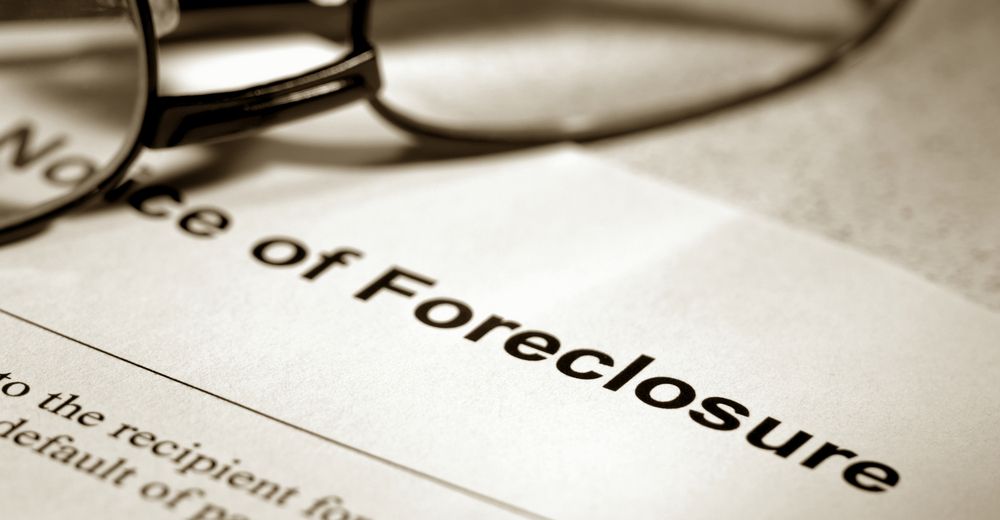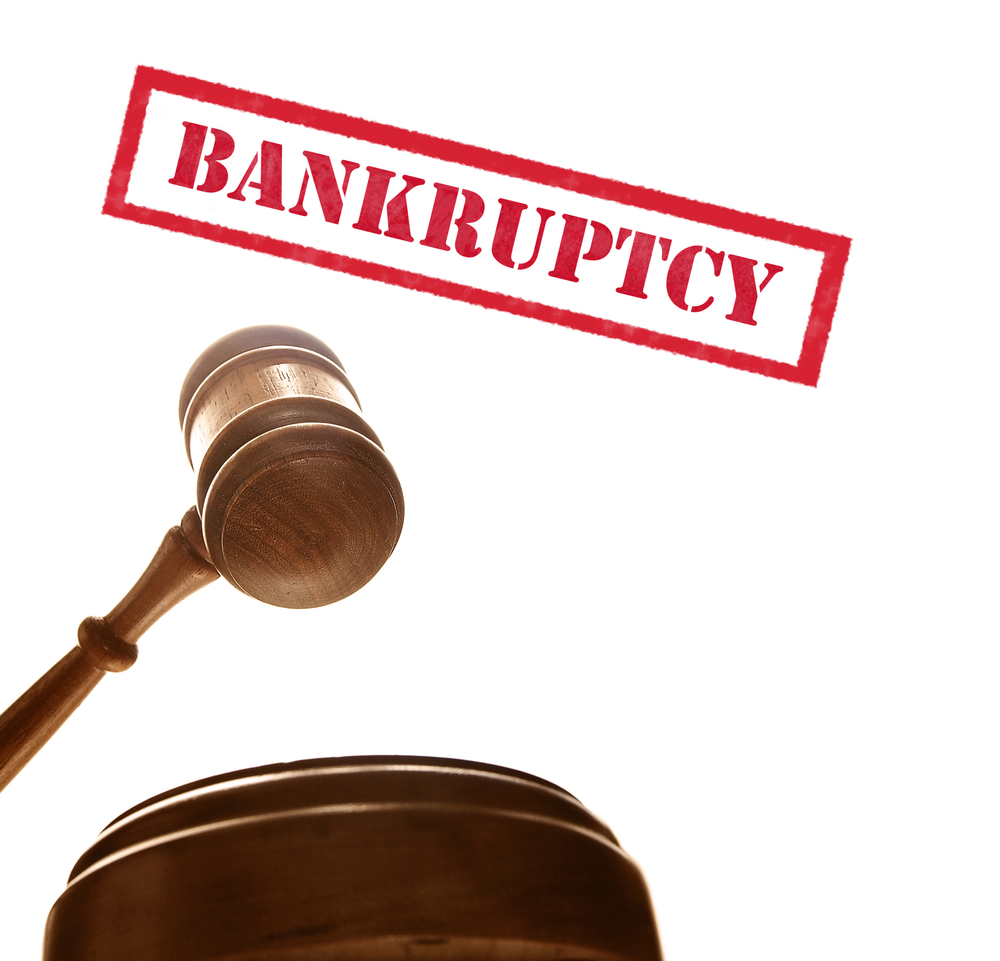12 Ways to stop foreclosure
Many homeowners panic when faced with the possibility of losing their homes through foreclosure.

Most homeowners purchase their home with goals and dreams in mind, and these plans rarely include foreclosure.
Panic and other emotions are not useful when facing foreclosure, however.
Keeping calm and acting quickly, on the other hand, can help prevent or stop foreclosure.
Why Foreclosures Happen and How to Prevent Them
A small number of homebuyers buy homes using elaborate schemes and never intend to make payments on their properties.
These cases of mortgage fraud are not very common, though.
Most homeowners face problems that make them suddenly unable to pay their home loan. Sudden unemployment, a medical emergency, a death in the family, or a divorce can affect a household income unexpectedly, leaving the homeowner unable to make payments on the mortgage.
Large debts, demotions, unexpected home repair needs, and an adjusted mortgage interest rate can also affect a homeowner's ability to repay a home loan.

If you are facing any of these problems or any other issues that leave you unable to meet your mortgage obligations, it is important to face the problem directly and early.
The worst thing a homeowner can do is to ignore the problem. Ideally, a homeowner will want to avoid having a Notice of Default filed in the first place.
The Notice of Default filing is the first step a lender takes to repossess a property.
Lenders do not want to file a Notice of Default, but will do so if a homeowner does not meet their financial obligations.
To prevent your lender from filing a Notice of Default, always keep communication open with your lender.
If you know you will be late with a mortgage payment or will be unable to make a payment, call your lender at once and explain your situation honestly.
The lender may be willing to work out an alternative payment plan with you or develop a refinancing package for you that will help you keep your home and avoid foreclosure.
Be Fast About Your Decisions
It is imperative that you act quickly.
If you refuse to answer questions or letters from your lender, your lender is far less likely to work closely with you because he or she will be worried that you have no intention of meeting your payments.
If you are honest and show a commitment to resolving the issue, on the other hand, your lender will likely work with you to assist you.
Your lender does not want to foreclose and most lenders have a variety of solutions to help homeowners in trouble.
Some lenders may offer forbearance, which means allowing you extra time to repay your mortgage arrears. Usually, this involves agreeing to a repayment plan.
In rare cases, lenders may also forgive a payment.
This means that the lender relieves you of your obligation to make a payment for one or two months. Another option is note modification.

This means that the lender changes your interest rate, freezes your interest rate, or extends the term of your loan to make the mortgage more affordable for you.
A lender can also offer you a partial claim, which is another loan that lets you meet your mortgage obligations.
If you address your financial problems early before they affect your credit rating, your lender may be willing to refinance your loan with a new loan or work out a repayment schedule whereby you pay a little extra each month until you repay your arrears.
If you address the issue early, a Notice of Default may never be filed, your credit score will be safe, and you can resolve the issue before you are in danger of losing your home. It pays to be proactive.
Stopping Foreclosure
If you have not been able to prevent your lender from filing a Notice of Default, you may have fewer options.
However, it is still possible to stop foreclosure. Once a Notice of Default has been filed, a lender may be more reluctant to negotiate.
You will still have a reinstatement period. This is a period of time during which you can stop the foreclosure by paying the mortgage arrears and any costs the lender has had to incur because of the Notice of Default filing.
The reinstatement period varies from state to state; your Notice of Default should contain this information.
You Still Have Some Options
Here we present you 12 different ways that you can explore to avoid and prevent foreclosure.
1 - Foreclosure Workout / Repayment plan
It's a myth that your lender wants to repossess your property. In all actuality, they'd rather work something out with you - such as a repayment plan - that keeps you in your home.
Remember, your lender is in the business of lending money, not owning real estate.
Contact them, explain what's going on, and work with them to pin down a repayment plan that fits your current financial circumstances.
Along with this, make sure you take immediate action. Waiting around and hoping for the best isn't the right solution, as it only pushes you further behind on payments.
When you're honest with your lender and clear about your situation, it's much easier to agree to a repayment plan.
2 - Pay the Total Amount Past Due
By far, this is the simplest way to fight foreclosure.
The first step is contacting your lender to determine exactly how much money you owe. From there, look at your financial situation to determine if there's any way possible to past the total amount due.
If you're successful in doing so, your lender has no choice but to stop the foreclosure process.
You're now current on your loan, so there's nothing they can do to you.
Should you go down this path, make sure you create a plan for avoiding a similar situation in the future.
You don't want to find yourself falling behind again, as it'll force your lender to take the same action.
3 - Loan Modification
You want to stay in your home, but at the same time, you realize that the terms and conditions of your mortgage won't allow you to do so.
Just the same as a repayment plan, the first step is to contact your lender to discuss your situation. Ask questions such as: what is the current past due amount? What is the total balance of my mortgage?
Once you have all the data you need, you can decide if it's time to request a loan modification.
You can modify many terms of your loan, as long as your lender is willing to do so.
For example, you could work out a lower interest rate and/or tack on missed payments to the end of your term.
If you're going to ask for a modification, make sure it'll actually help you stay current in the future.
Don't use this method to simply buy time.
If you want to know more about Loan Modification, check here.
4 - Refinancing
Do you have a higher than average interest rate? Is this a result of securing a loan when your credit score was on the weak side?
If you don't have a competitive interest rate, it's time to take a sharp look at refinancing. This alone can save you hundreds of dollars on your monthly payment, thus making it more affordable in the future.
Before you go down this path, speak with your lender - as well as several others - about the process and the rate you'll qualify for. You don't want to spend too much time on the refinancing process if you don't get anything in return. This only works if you can secure an interest rate that is considerably lower than what you have now.
Tip: run the calculations, with your current and new interest rate, through an online mortgage calculator.
This gives you a clear idea of how much you could save by refinancing, which will lead you to determine if it's a good strategy for fighting foreclosure.
5 - Short Sale
It's possible that your home is worth less than the balance of your mortgage. For example, your home appraises for $200k, but you owe $250k on your mortgage.
This is known as being "underwater."
If you're able to stay current with your mortgage payments, there's no problem for the time being. It's frustrating, but it won't cause you to lose your home.
However, if your lender is beginning foreclosure proceedings, it's time to consider a short sale.

With this strategy, you negotiate for the lender to let you sell your house for less than what you owe. Subsequently, they write off the remaining balance and part ways.
A short sale is one of the most common ways to fight foreclosure, but remember this: you don't get to stay in your home. That said, you're able to prevent foreclosure and the credit hit that goes along with it.
6 - Bankruptcy
You don't dream of filing for bankruptcy, but if your financial situation continues to worsen, it's one of the best business moves you can make.
As an individual consumer, Chapter 7 and Chapter 13 are the two types of bankruptcy that deserve your attention.

With both of these, the automatic stay will temporarily halt the foreclosure process. This gives you more time to review your situation, answer key questions, and implement a strategy for the future.
Also, it may be the best way to keep your home in the long run. For instance, with Chapter 13 bankruptcy, you may be able to restructure your mortgage (and other payments) to make it more affordable.
This allows you to catch up on the payments you've missed while staying on track in the future.
Yes, bankruptcy will harm your credit score, but you must compare this downfall to the many benefits of filing.
7 - Deed in Lieu
With a deed in lieu of foreclosure, you transfer the title of your property to your lender in exchange for relief from your mortgage debt. In other words, you're giving your house back.
Generally, a deed in lieu of foreclosure is a last resort. Most lenders want homeowners to first consider other options for avoiding foreclosures, such as a loan modification or even a short sale.
There are benefits to both the lender and the homeowner. For example, as a homeowner, you can rid yourself of your home and mortgage without the bank formally repossessing your property. Also, it saves you a lot of time, as foreclosure can drag on for many months (or longer).
Conversely, lenders can also benefit from a deed in lieu of foreclosure, as it saves them both time and money.
If you're interested in taking advantage of a deed in lieu of foreclosure, contact your lender to determine if you're eligible.
8 - Assumption / Lease Option
When you sign your mortgage documents at closing, you'll notice that there's a "due on sale" clause that says you agree to pay off your loan should you transfer the property, such as via a sale.
However, in the event of a looming foreclosure, you may be able to negotiate this with your lender.
Your goal is for your lender to permit another buyer to assume your current loan.
Before they do this, they'll need to review the new buyer's qualifications, such as their credit score and financial circumstances, to ensure that they're not taking an unnecessary risk.
This is one of the most difficult ways to fight foreclosure, as most lenders aren't receptive to the idea. However, if it comes down to an assumption or having to go through the foreclosure process (and selling the home in the end), they may be willing to consider it.
9 - Forbearance
Your mortgage lender may allow you to make lower payments or even pause your payments altogether temporarily. Either way, this is known as forbearance.
Forbearance is often the best way to fight foreclosure related to unforeseen financial damage, such as that related to a job loss, severe illness or injury, or damage to your home (think fire or flood).
The one thing you need to remember is that your lender does expect you to pay back the money in the future.
Before you agree to forbearance, make sure you understand the terms and conditions of the agreement. If you're unsure that your financial situation will improve in the near future, it's often best to avoid forbearance and opt for something more permanent, such as a short sale or assumption.
While your lender is under no obligation to agree to forbearance, it's often better for them than having to repossess your home.
10 - File a Lawsuit
It's possible that you may be able to file a lawsuit to stop foreclosure. This is most common if your bank decides to use a non-judicial process, which means they're taking action outside of the court system.
By filing a lawsuit against the bank, you can challenge the foreclosure.
While it's an option, it takes quite a bit of preparation and proof. Here are some of the things you can provide to prove that your lender should not be able to foreclose on your home:
- Unable to prove that it owns the promissory note
- A violation of a federal or state law
- Did not act in compliance with all state mediation requirements
- Skipped over some (or all) of the steps outlined by the state's foreclosure process
Filing a lawsuit is complicated, time-consuming, and costly. However, if it comes down to saving your house from foreclosure, it may be something to strongly consider.
11 - Get Help from a HUD-approved Housing Counselor
There's no reason to believe that you have to communicate and negotiate with your lender personally. Instead, if you're facing foreclosure and are unsure of what to do next, you can consult with a HUD-approved housing counselor.
One of the top benefits of this option is that foreclosure prevention counseling services are available for free through HUD's Housing Counseling Program. You don't pay anything for the professional advice you receive.
If you're lost, looking for answers, and have concerns about how your lender is treating you, it's nice to have a HUD-approved housing counselor on your side. They can answer your questions, provide feedback on all your options for fighting foreclosure, and ensure that your lender doesn't take advantage of you.
Sometimes, all you need is an experienced housing counselor to better understand your situation and what to do next. You don't have anything to lose.
12 - Foreclosure Relief Programs

There are a variety of federal foreclosure relief programs that can help you stay in your home.
While you're not likely to qualify for all of them, there's a good chance that at least one will suit your financial circumstances. Here are the most common options:
- Home Affordable Modification Program (HAMP): Through this program, you're able to reduce your monthly mortgage payment to 31 percent of your verified monthly gross (pre-tax) income.
- Principal Reduction Alternative (PRA): This program is designed for homeowners whose property is worth less than what they owe. It works with lenders to help reduce the amount that you owe, so you're no longer underwater.
- Home Affordable Refinance Program (HARP): If you're current on your mortgage but have concerns about your ability to pay in the future, you may look into refinancing your loan. If you're unable to refinance because your home's value isn't as high as it once was, you may be able to do so through HARP.

